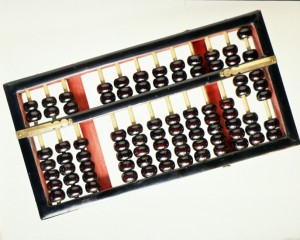AMCON (DIT) – An attractive convenience store supplier
AMCON Distributing Co. is a wholesale distributor of consumer products, which constitutes the bulk of its business, and also runs fourteen health food stores. The wholesale segment is the 9th largest in the country and provides mainly tobacco products, but also candy, beverages, paper products, health & beauty, frozen foods, and institutional food services. It has five distribution centers in Illinois, Missouri, Nebraska, and both Dakotas and serves mainly convenience stores.
 Cigarettes represent roughly 72% of AMCON’s wholesale revenues. In its financial reports the firm claims to have efficient operations and economies of scale, but I’m not sure I see a moat. The current free cash flow yield to common shareholders as normally calculated is an amazing 20.5%, although there is a convertible preferred issue with a conversion price that is well below the current price, and the resulting dilution must be taken into account. Even so, I calculate that AMCON is trading at a large discount to its fair value. Furthermore, operating trends at AMCON are positive, although I would not care to project these current trends as a guide to the future. Sales have increased 11.5% for full year 2010 as compared to 2009, and although gross margins slipped, free cash flow margins remained flat owing to lower interest expenses. Furthermore, inventory turns increased and the cash conversion cycle shortened.
Cigarettes represent roughly 72% of AMCON’s wholesale revenues. In its financial reports the firm claims to have efficient operations and economies of scale, but I’m not sure I see a moat. The current free cash flow yield to common shareholders as normally calculated is an amazing 20.5%, although there is a convertible preferred issue with a conversion price that is well below the current price, and the resulting dilution must be taken into account. Even so, I calculate that AMCON is trading at a large discount to its fair value. Furthermore, operating trends at AMCON are positive, although I would not care to project these current trends as a guide to the future. Sales have increased 11.5% for full year 2010 as compared to 2009, and although gross margins slipped, free cash flow margins remained flat owing to lower interest expenses. Furthermore, inventory turns increased and the cash conversion cycle shortened.
Turning to the figures, in 2010 sales were $1011 million, reported operating income was $15.5 million, capital expenditures in excess of depreciation were $.5 million, producing operating cash flow of $15 million. Interest expense was $1.5 million, leaving pre-tax income of $13.5 million and after-tax income of $8.9 million. Deducting $.3 million in preferred dividends leaves free cash flow to common shareholders of $8.6
| 2010 | 2009 | 2008 | |
| Sales | 1011 | 907 | 860 |
| Operating income | 15.5 | 15.4 | 11.7 |
| Excess capital spending | .5 | .5 | -.5 |
| Operating cash flow | 15 | 14.9 | 12.2 |
| Interest expense | 1.5 | 1.6 | 2.9 |
| Pretax earnings | 13.5 | 13.4 | 9.3 |
| After-tax earnings | 8.9 | 8.5 | 6.2 |
| After-tax free cash flow to common | 8.6 | 8.2 | 5.9 |
Furthermore, inventory turns improved and the cash conversion cycle shortened, based on balance sheet figures at the end of fiscal years 2008 and 2009. In 2009 there were 24.3 inventory turns, and in 2010 there were 29.3. The cash conversion cycle in 2010 was 17.8 days, while in 2009 it was 20.7 days, although inventory levels at the close of 2008 did appear somewhat high.
2011 is shaping up well as well. Sales were $462 million as compared to $474 million for the first two quarters last year. However, margins were slightly improved, although perhaps not by a significant amount. Operating income was $6.3 million versus $6.2 last year; excess capital expenditures were $.1 million as compared to $.4 last year, so operating cash flow rounds to $6.3 million versus $5.8 million last year. Interest expense was $.6 million versus $.8 million last year, leaving $5.6 million in pretax income, versus $5.1 million last year. After estimated taxes, we have $3.5 million now, and $3.1 million same time last year. After preferred stock accruals, we are at $3.3 million in free cash flow to common, versus $3 million for the same period last year, which is encouraging.
AMCON has also been chipping away at its debt at a fast rate, having reduced debt from $38 million at the end of 2008 to $20 million as of the latest 10-q. However, debt levels are presently higher owing to the recent acquisition of the distribution assets of LP Shanks for $16.4 million.
In terms of the convertible preferred shares I mentioned earlier, there are two issues of preferred shares, the first consisting of 82481 shares that convert at $30.31, for a total of $2.5 million, and 81135 more that convert at $24.65, for a total of $2 million. Both issues have a dividend payout of between 6 and 7 percent. As the company now trades at $71.40, and still appears cheap based on an earnings multiple of roughly 5x, the conversion premium must be taken into account.
 If we apply a multiple of 10x, which I think is a reasonable multiple for this company, we would have a market cap of $86 million. If we neglect the preferred stocks, $86 million divided among 590 thousand outstanding shares would produce a price of $147. However, if the shares are converted, the total shares outstanding increases to roughly 770 thousand, and the price target goes to $115. Despite the high conversion value, the preferreds are still redeemable at a small premium over face value at the option of the Company. However, the two series of preferred shares are respectively owned by Chris Atayan, the CEO, and an unidentified financial institution that placed Mr. Atayan on the Board of Directors, so it is not likely that outside shareholders will benefit from the redemption privilege.
If we apply a multiple of 10x, which I think is a reasonable multiple for this company, we would have a market cap of $86 million. If we neglect the preferred stocks, $86 million divided among 590 thousand outstanding shares would produce a price of $147. However, if the shares are converted, the total shares outstanding increases to roughly 770 thousand, and the price target goes to $115. Despite the high conversion value, the preferreds are still redeemable at a small premium over face value at the option of the Company. However, the two series of preferred shares are respectively owned by Chris Atayan, the CEO, and an unidentified financial institution that placed Mr. Atayan on the Board of Directors, so it is not likely that outside shareholders will benefit from the redemption privilege.
I have to reserve my final thought for liquidity. The daily volume of this stock is roughly 1500 shares. Many days there are only one or two trades, and there are days where the company does not trade at all. This is not uncommon for micro-cap stocks, but I have taken the position, in discussing other microcaps, that liquidity is not as important to the long-term investor, because as Ben Graham noted in Security Analysis, such an investor should rarely have to sell in a hurry. Besides, the events of 2008 have shown that liquidity is often an illusion anyway. Damodaran, in his useful toolkit Damodaran on Valuation, does make it clear that there is a yield premium for illiquidity observed in the market. But, as value investors, who have the patience to wait for our prices, we can follow the advice of Ben Graham and not worry about the liquidity that we have little need for, and thus collect a premium that has no effect on our activities and costs us nothing.
Therefore, I can say that Amcon is trading at a significant discount to reasonable valuation, even taking the convertible preferred stock into account. A such, I can recommend it as a portfolio candidate for investors who can tolerate illiquidity.
nice. a few % of my portfolio is in this.. one of my higher conviction stocks.
my main concern is the excessive level of compensation chris takes from the company, and the fact that he is receiving his preferred dividends when the company has the ability to convert them into stock. After conversion into common stock, he’d receive not much less in dividends from the common stock (taking into the conversion multiple), but it bothers me on principle.
i’m glad that DIT has releveraged with the acquisition, because frankly they can easily handle the debt given how much net working capital they have, and how quickly they turn it over. their working capital to me is almost interchangeable with cash.